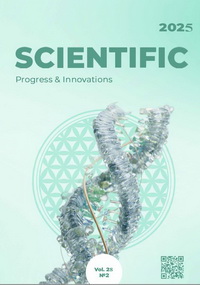Buckwheat as a strategic crop in the context of climate change, agroecological sustainability, and food security
DOI:
https://doi.org/10.31210/spi2025.28.02.17Keywords:
Fagopyrum esculentum Moench, biological properties, biodiversity, phenotypic plasticity, plant breeding, productivityAbstract
The aim of this review is to systematize and analyze current scientific knowledge on the role of buckwheat as a strategic crop in the context of the global challenges of the 21st century. It assesses its potential to contribute to agroecological sustainability and food security under climate change and identifies promising directions for its practical application in modern farming systems. Buckwheat is an adaptive crop with a short growing season, capable of efficiently absorbing nutrients and thriving on low-fertility soils. It supports biodiversity, suppresses weeds, improves soil properties, and exhibits phytoremediation potential, making it valuable for sustainable and organic agriculture. Climate change in Ukraine complicates buckwheat cultivation due to drought and heat stress, especially during the flowering stage. The adaptive capacity of the crop is realized through an efficient root system, osmotic regulation, and the development of new cultivars. A region-specific approach to cultivar selection and agronomic practices can help stabilize yields under climate variability. Buckwheat breeding in Ukraine focuses on the development of high-yielding, climate-resilient cultivars with enhanced drought and heat tolerance, improved grain quality, and suitability for mechanized production. Promising directions include hybrid development with heterosis effect and advancements in seed production. Buckwheat plays a strategic role in agricultural adaptation to climate change, ensuring stable productivity in intensive crop rotations and suitability for organic systems. Its ecological functions, including carbon sequestration and phytoremediation, contribute to mitigating greenhouse gas emissions and soil restoration. Buckwheat is a unique crop with high nutritional and functional value. It is a source of complete protein, flavonoids, minerals, and vitamins. Its gluten-free nature and low glycemic index make it suitable for dietary nutrition and the development of innovative food products and nutraceuticals.
Downloads
Published
How to Cite
Issue
Section
License
Copyright (c) 2025 Scientific Progress & Innovations

This work is licensed under a Creative Commons Attribution 4.0 International License.

 Creative Commons Attribution 4.0 International Licens
Creative Commons Attribution 4.0 International Licens